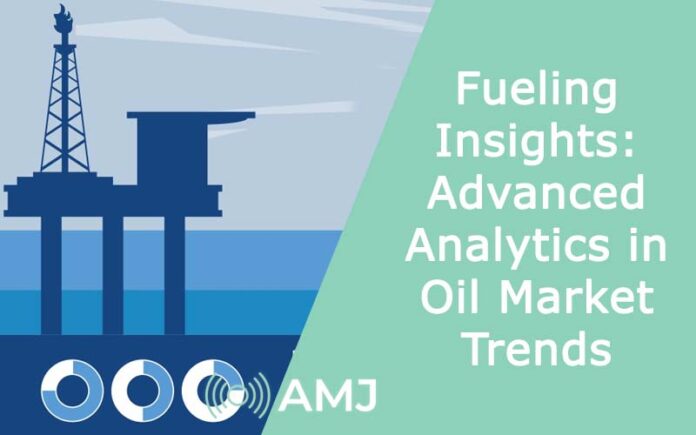The global oil market stands at the intersection of economic stability, geopolitical shifts, and environmental concerns. Understanding its intricate dynamics requires a nuanced approach, and in recent years, advanced analytics has emerged as a key driver for insightful decision-making in the industry. For advanced analytics and insights shaping decision-making in the global oil market, consider exploring resources available at oilprofit.app
Contents
- 1 Overview of the Oil Market
- 2 The Role of Advanced Analytics in the Oil Industry
- 3 Leveraging Predictive Analytics for Price Trends
- 4 Enhancing Operational Efficiency with Data-Driven Decision-Making
- 5 Navigating Geopolitical Factors with Risk Analytics
- 6 Sustainable Practices and Environmental Analytics in Oil Markets
- 7 Future Trends: Artificial Intelligence and the Next Frontier
- 8 Conclusion
Overview of the Oil Market
Historical Context and Evolution
The oil market has undergone significant transformations over the decades. From its early days marked by volatile prices and geopolitical tensions to the modern era shaped by technological advancements, the industry has continuously adapted. Historical trends lay the foundation for predictive analytics, enabling analysts to identify cyclical patterns.
Current Dynamics and Global Significance
Today, the oil market plays a crucial role in the global economy. The supply and demand dynamics, influenced by factors such as economic growth, geopolitical events, and technological advancements, are more complex than ever. Advanced analytics provides the tools to dissect these dynamics, offering a clearer understanding of the current market landscape.
The Role of Advanced Analytics in the Oil Industry
Definition and Scope of Advanced Analytics
- Incorporating Big Data and Machine Learning
Advanced analytics in the oil industry goes beyond traditional statistical analysis. It harnesses the power of big data, utilizing vast datasets generated from various sources like sensors, satellites, and drilling operations. Machine learning algorithms process this information, identifying patterns and correlations that human analysis might overlook.
- Applications in Oil Market Analysis
The applications of advanced analytics are diverse, ranging from predicting market trends to optimizing operational processes. Predictive analytics, in particular, has become a cornerstone for decision-makers, offering insights into future price trends and operational challenges.
Leveraging Predictive Analytics for Price Trends
Analyzing Historical Price Data
- Identifying Patterns and Cycles
Predicting oil prices requires a deep dive into historical data. Advanced analytics algorithms sift through vast datasets, identifying patterns and cycles that contribute to price fluctuations. By understanding historical trends, analysts can make more informed predictions about future market movements.
- Factors Influencing Price Fluctuations
Beyond historical data, predictive analytics takes into account a myriad of factors influencing oil prices. These include geopolitical events, economic indicators, and technological advancements. By integrating these variables, analysts gain a holistic view, enhancing the accuracy of price trend predictions.
Enhancing Operational Efficiency with Data-Driven Decision-Making
Optimizing Exploration and Production
- Reservoir Management through Analytics
Advanced analytics plays a pivotal role in optimizing reservoir management. By analyzing geological data, production rates, and equipment performance, operators can make informed decisions about resource extraction. This not only maximizes output but also minimizes environmental impact.
- Predictive Maintenance in Oil Drilling Operations
Unplanned downtime in drilling operations can have significant financial implications. Predictive maintenance, enabled by advanced analytics, uses real-time data from sensors to anticipate equipment failures. This proactive approach minimizes downtime, reduces maintenance costs, and enhances overall operational efficiency.
Understanding the Impact of Geopolitical Events
- Case Studies: Geopolitical Shifts and Oil Market Trends
Geopolitical events, such as conflicts in oil-producing regions or changes in trade agreements, can have a profound impact on oil markets. Through risk analytics, analysts can assess the potential implications of such events, enabling companies to develop contingency plans and mitigate risks effectively.
- Mitigating Risks through Analytics
By integrating risk analytics, oil companies can proactively identify and address potential threats. This includes evaluating the stability of supply chains, assessing the impact of regulatory changes, and monitoring geopolitical tensions. Such insights empower decision-makers to navigate uncertainties and safeguard their operations.
Sustainable Practices and Environmental Analytics in Oil Markets
Monitoring and Reducing Carbon Footprint
- Data-Driven Sustainability Initiatives
Environmental concerns are reshaping the oil industry, driving a shift towards sustainable practices. Advanced analytics facilitates the monitoring of carbon emissions, helping companies set and achieve sustainability goals. Real-time data allows for dynamic adjustments, promoting responsible resource management.
- Analyzing Market Responses to Environmental Practices
Beyond internal initiatives, environmental analytics can gauge market responses to sustainable practices. Consumers and investors increasingly prioritize environmentally conscious companies. By leveraging analytics, oil companies can align their strategies with market expectations, ensuring long-term viability.
Future Trends: Artificial Intelligence and the Next Frontier
Emerging Technologies in Oil Market Analytics
- AI-driven Market Predictions
Artificial intelligence (AI) is poised to revolutionize oil market analytics. AI algorithms, with their ability to adapt and learn from new data, can provide more accurate and dynamic predictions. As machine learning capabilities evolve, AI-driven insights will become increasingly integral to strategic decision-making.
- Automation in Decision-Making Processes
The future of oil market analytics lies in automation. Advanced algorithms can not only analyze data but also automate decision-making processes. This not only speeds up response times but also minimizes the risk of human error, providing a more reliable and efficient decision-making framework.
Conclusion
In conclusion, the integration of advanced analytics into the oil industry is transforming decision-making processes across the board. Anchoring this transformation is the advent of technologies like artificial intelligence, heralding a new era in the oil industry. As we peer into the future, these advancements promise to refine existing processes and open new frontiers, ensuring the industry’s resilience and adaptability in the face of evolving challenges.












![Index of Money Heist [Season 1, 2, 3 & 4 – All Episodes, Cast and Plot] Index of Money Heist](https://www.asiamediajournal.com/wp-content/uploads/2021/05/Index-of-Money-Heist-3-100x70.jpg)